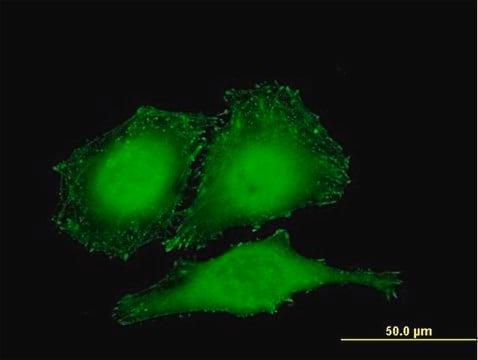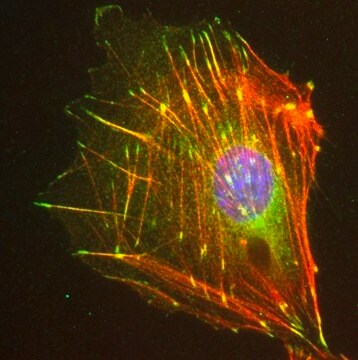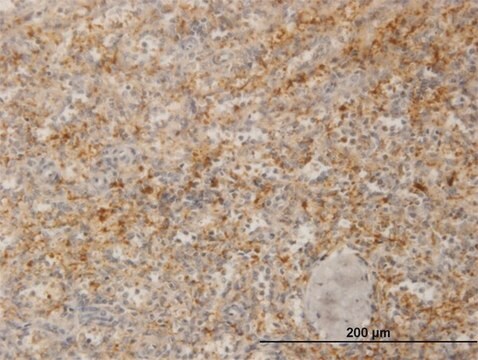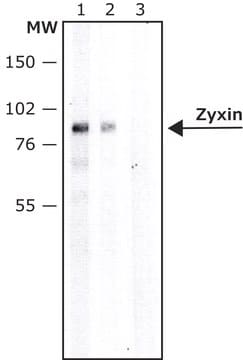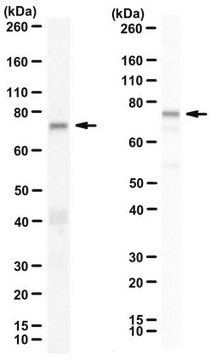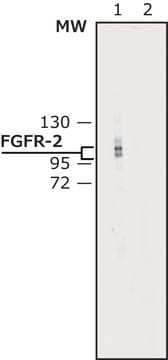MAB2610
Anti-Zyxin Antibody, clone 14E11.1
clone 14E11.1, from mouse
Synonyme(s) :
Zyxin2, Zyxin, Zyxin-2
About This Item
Produits recommandés
Source biologique
mouse
Niveau de qualité
Forme d'anticorps
purified immunoglobulin
Type de produit anticorps
primary antibodies
Clone
14E11.1, monoclonal
Espèces réactives
human, mouse, rat
Technique(s)
immunocytochemistry: suitable
western blot: suitable
Isotype
IgMκ
Numéro d'accès NCBI
Numéro d'accès UniProt
Conditions d'expédition
wet ice
Modification post-traductionnelle de la cible
unmodified
Informations sur le gène
mouse ... Zyx(22793)
Description générale
Immunogène
Application
Cell Structure
Cytoskeletal Signaling
Qualité
Western Blot Analysis: 0.5 µg/mL of this antibody detected Zyxin in 10 µg of HUVEC cell lysate.
Description de la cible
The calculated molecular weight is 61 kDa Zyxin is a phosphoprotein with an apparent molecular weight of 82–84 kDa (van der Gaag, E., et al. (2002). Journal of Investigative Dermatology. 118:246–254.). As a substrate of caspases, Zyxin can be cleaved as 30, 37, 48 and 70 kDa (C-B Chan, C-B., et al. (2007). Cell Death and Differentiation. 14:1688–1699.)
Forme physique
Stockage et stabilité
Remarque sur l'analyse
HUVEC cell lysate
Autres remarques
Clause de non-responsabilité
Not finding the right product?
Try our Outil de sélection de produits.
En option
Code de la classe de stockage
12 - Non Combustible Liquids
Classe de danger pour l'eau (WGK)
WGK 2
Point d'éclair (°F)
Not applicable
Point d'éclair (°C)
Not applicable
Certificats d'analyse (COA)
Recherchez un Certificats d'analyse (COA) en saisissant le numéro de lot du produit. Les numéros de lot figurent sur l'étiquette du produit après les mots "Lot" ou "Batch".
Déjà en possession de ce produit ?
Retrouvez la documentation relative aux produits que vous avez récemment achetés dans la Bibliothèque de documents.
Notre équipe de scientifiques dispose d'une expérience dans tous les secteurs de la recherche, notamment en sciences de la vie, science des matériaux, synthèse chimique, chromatographie, analyse et dans de nombreux autres domaines..
Contacter notre Service technique
